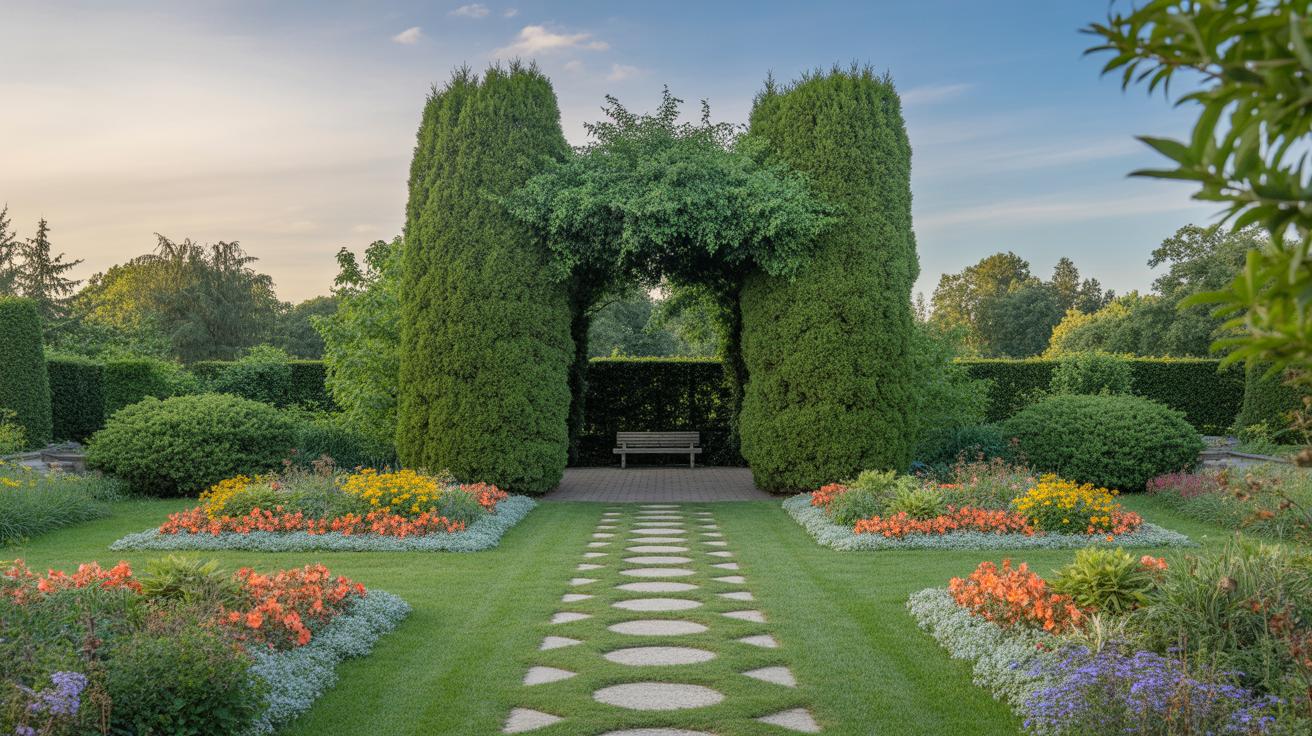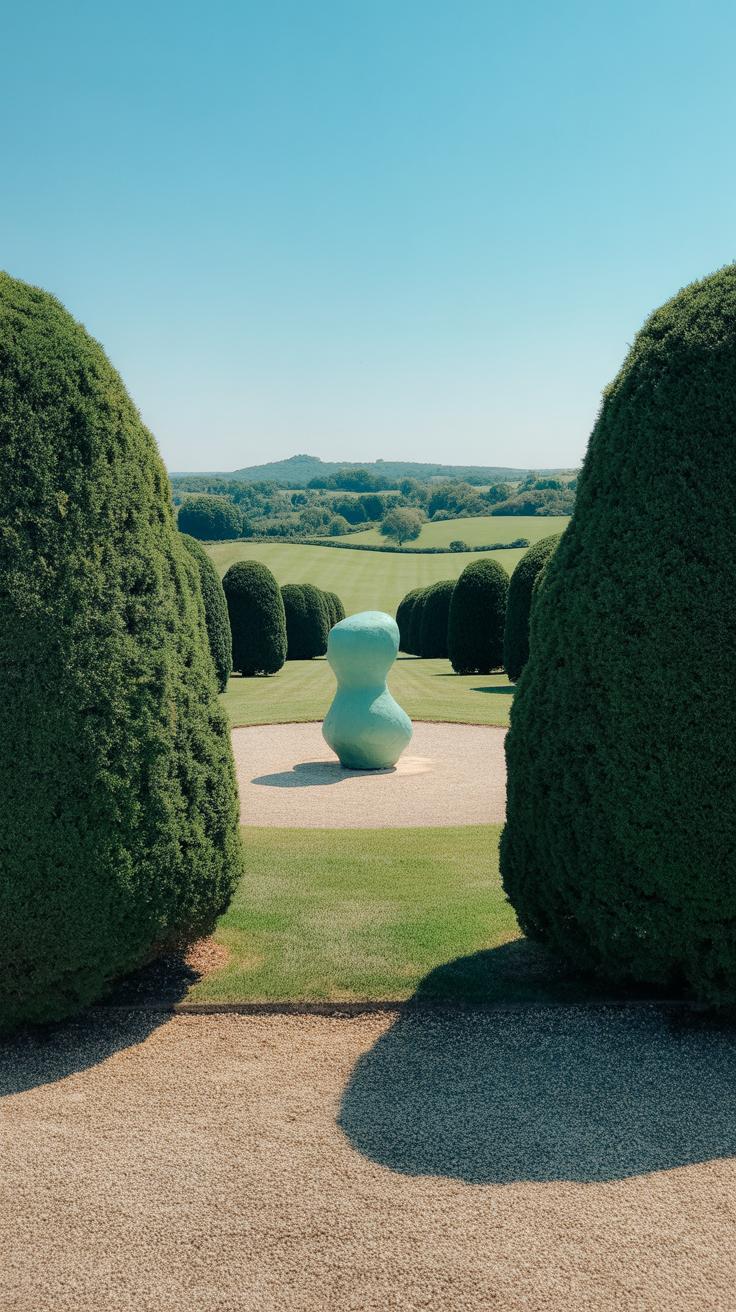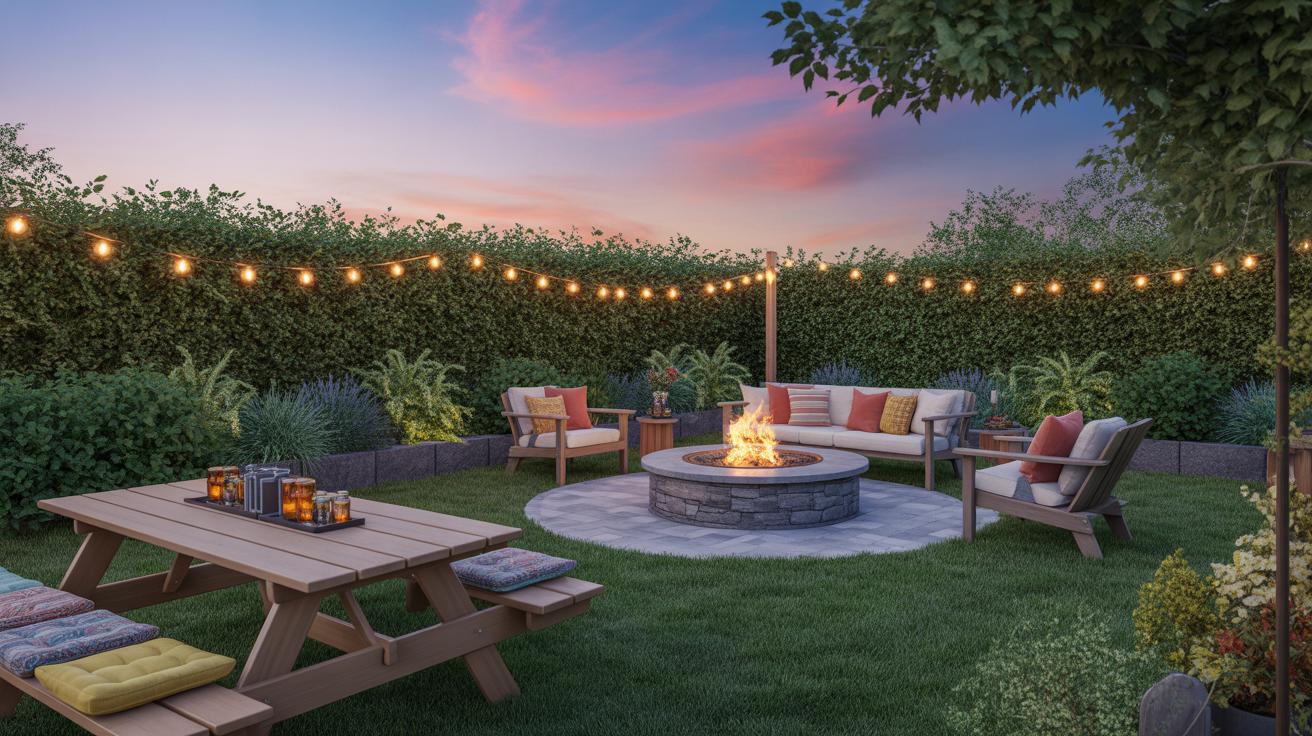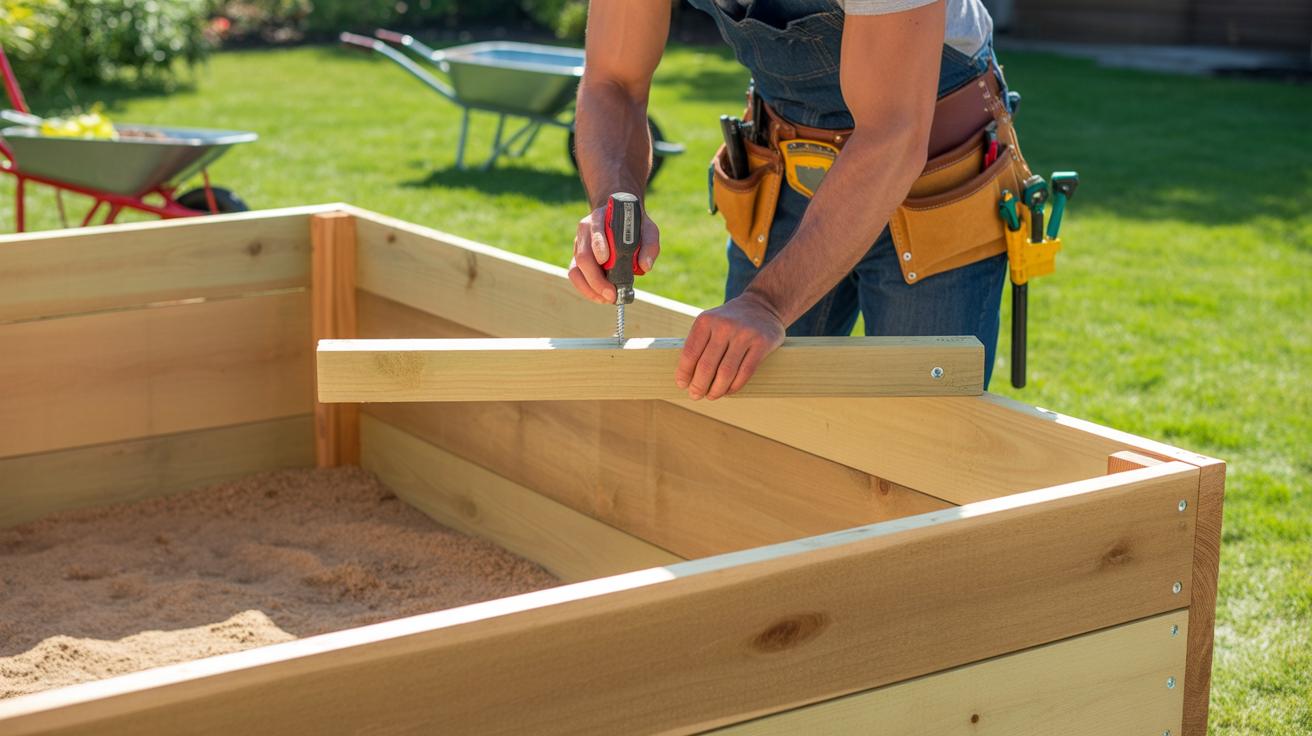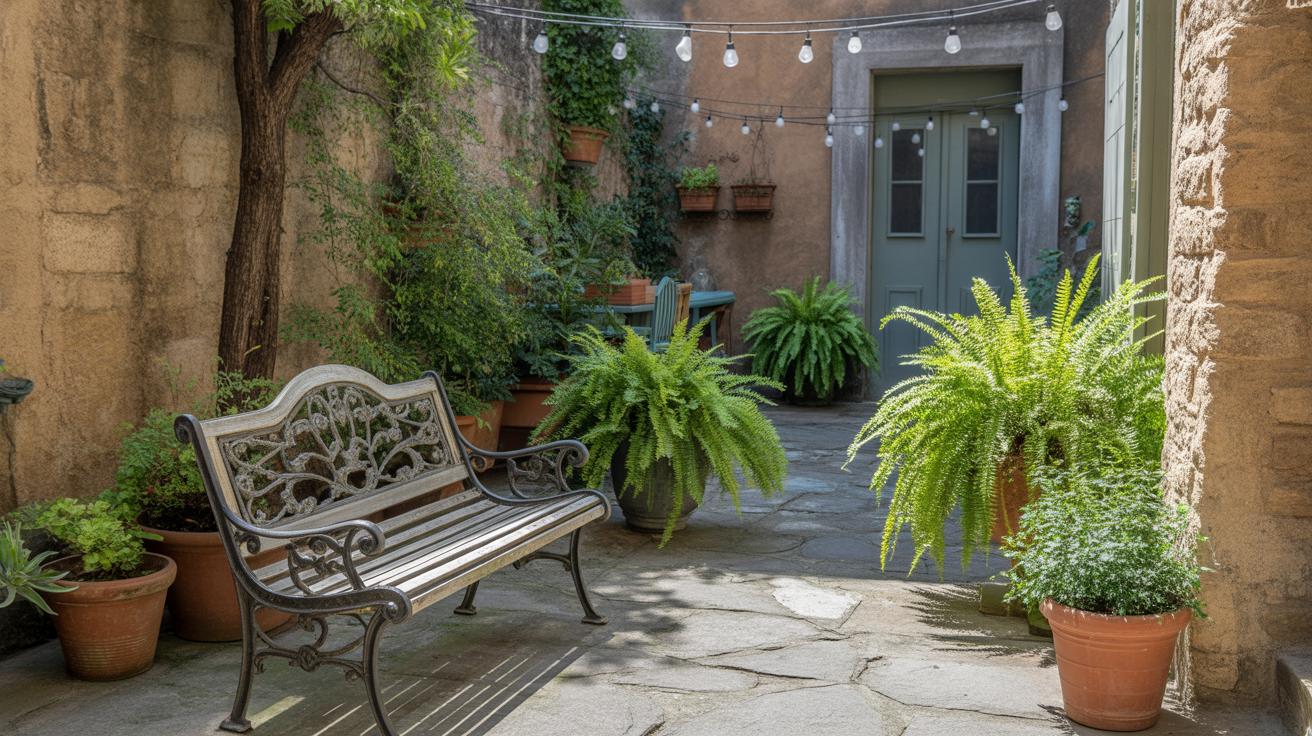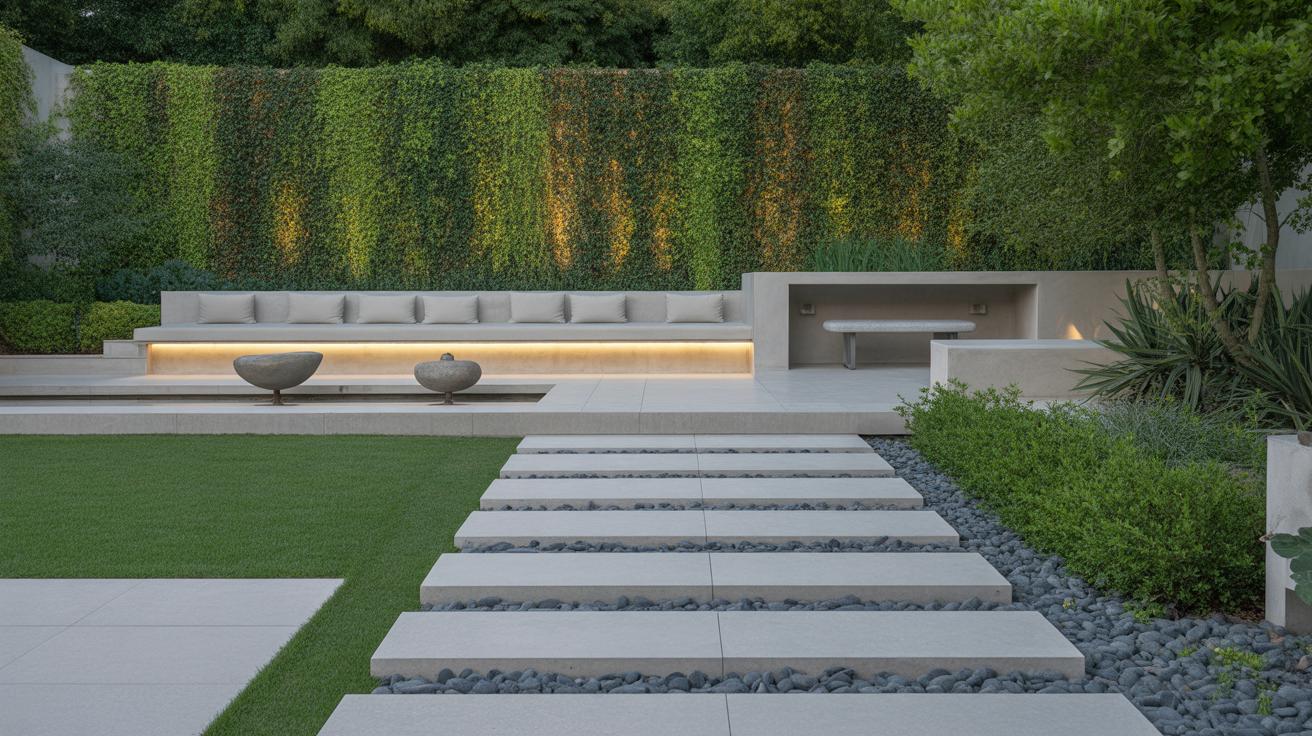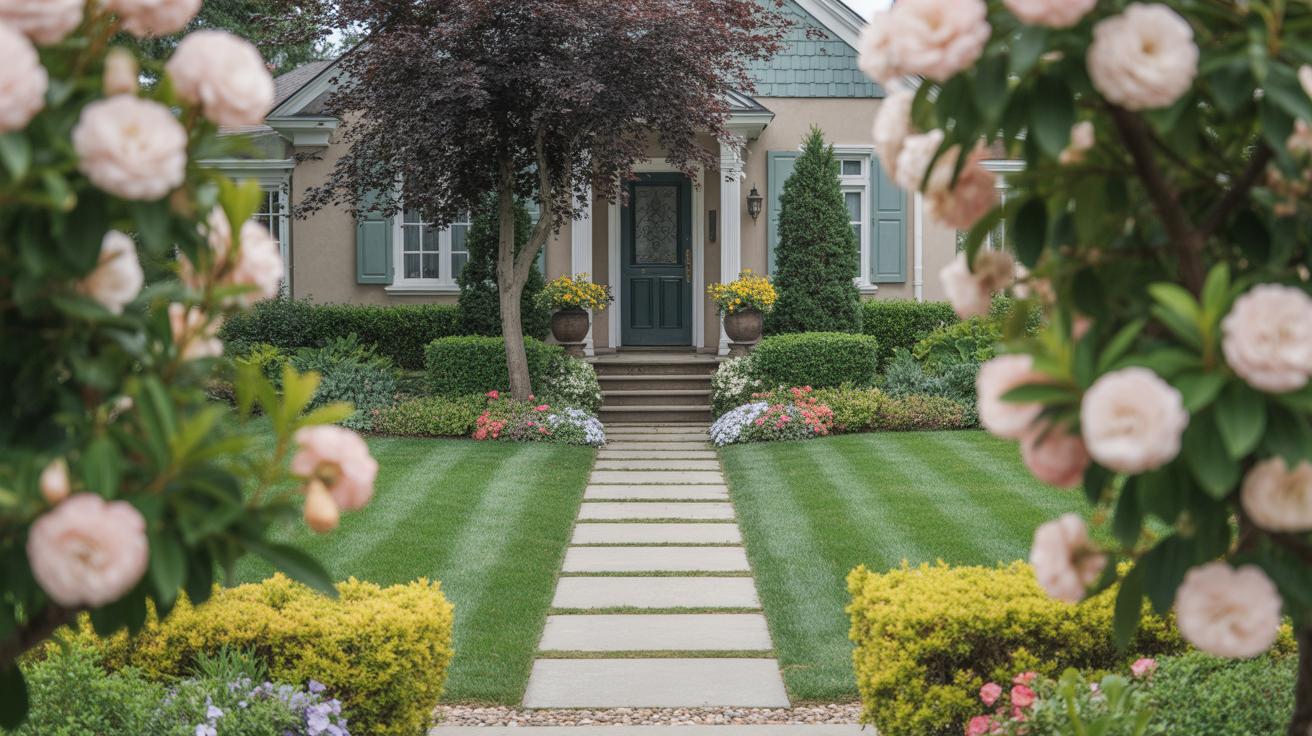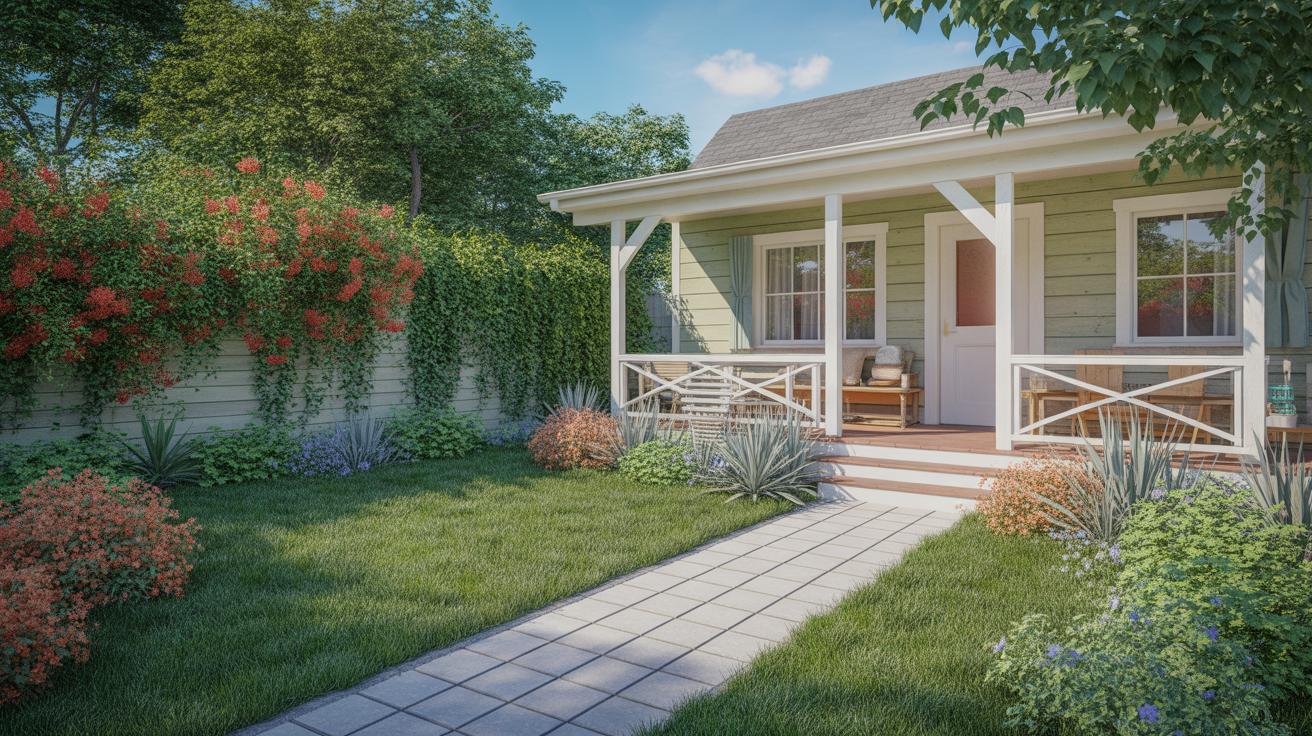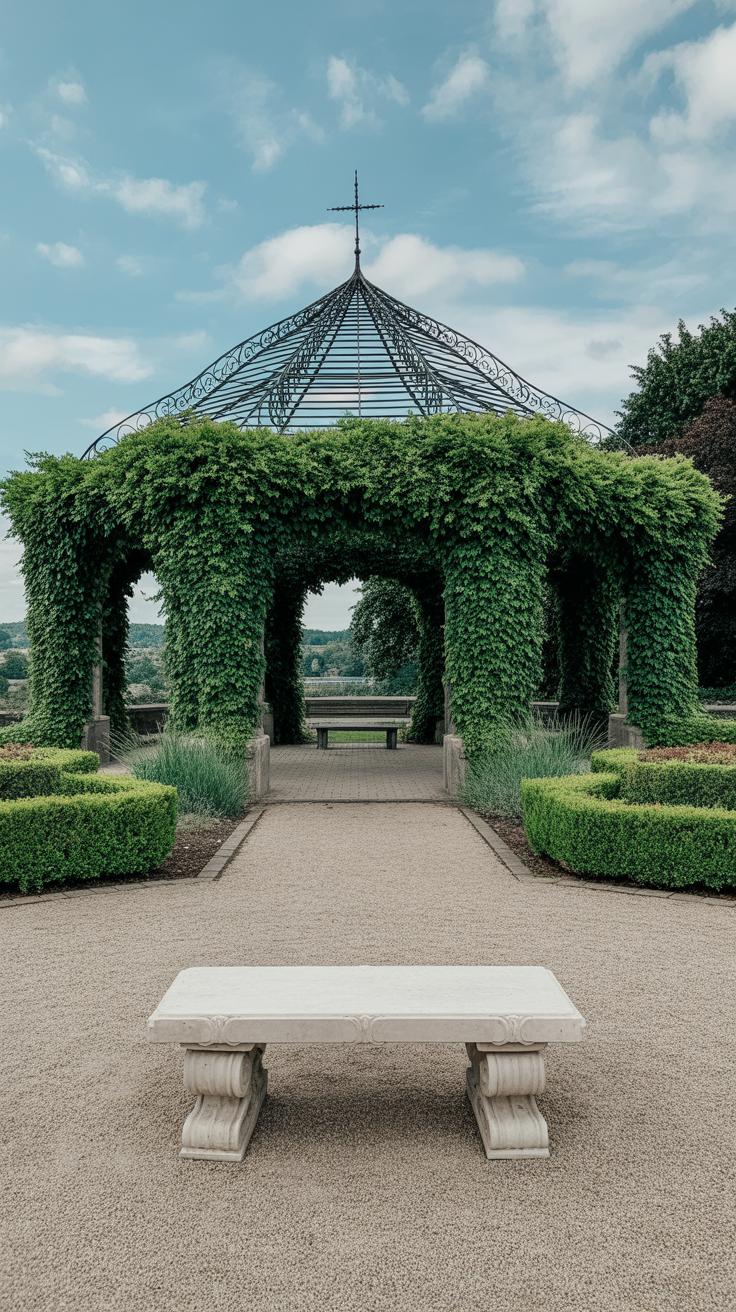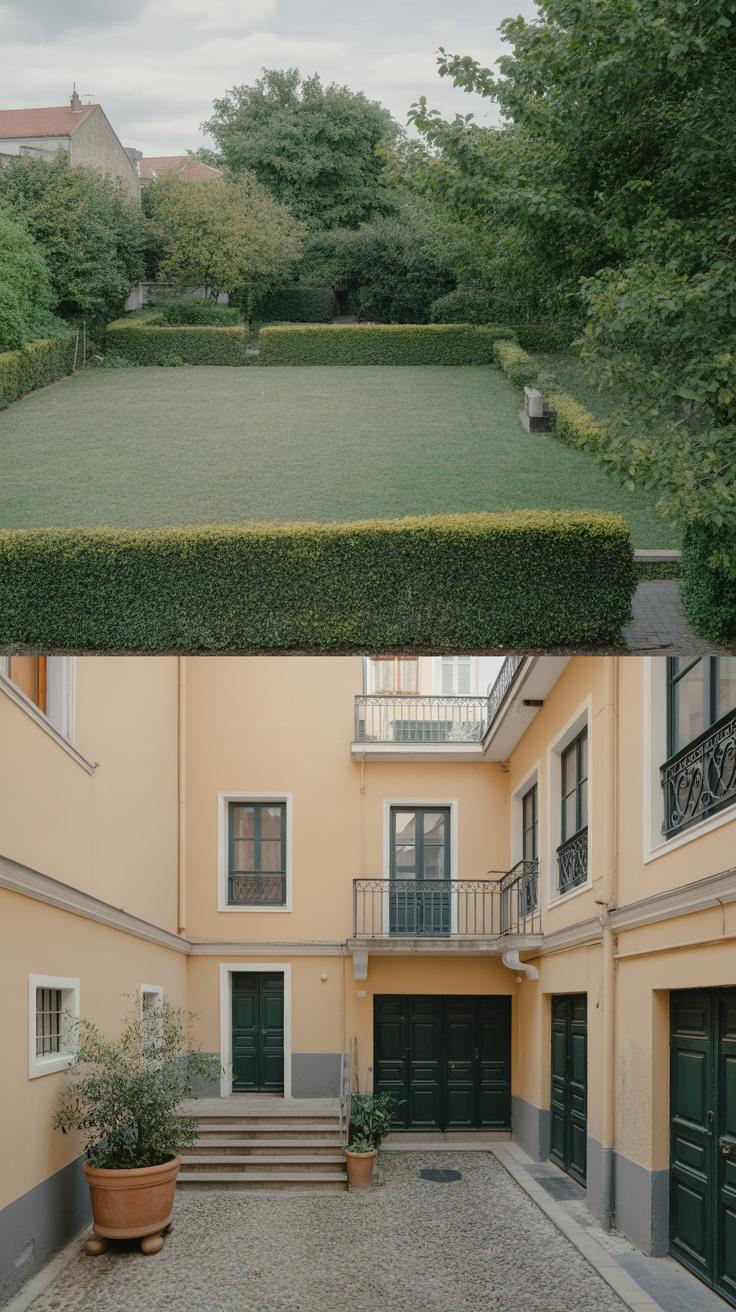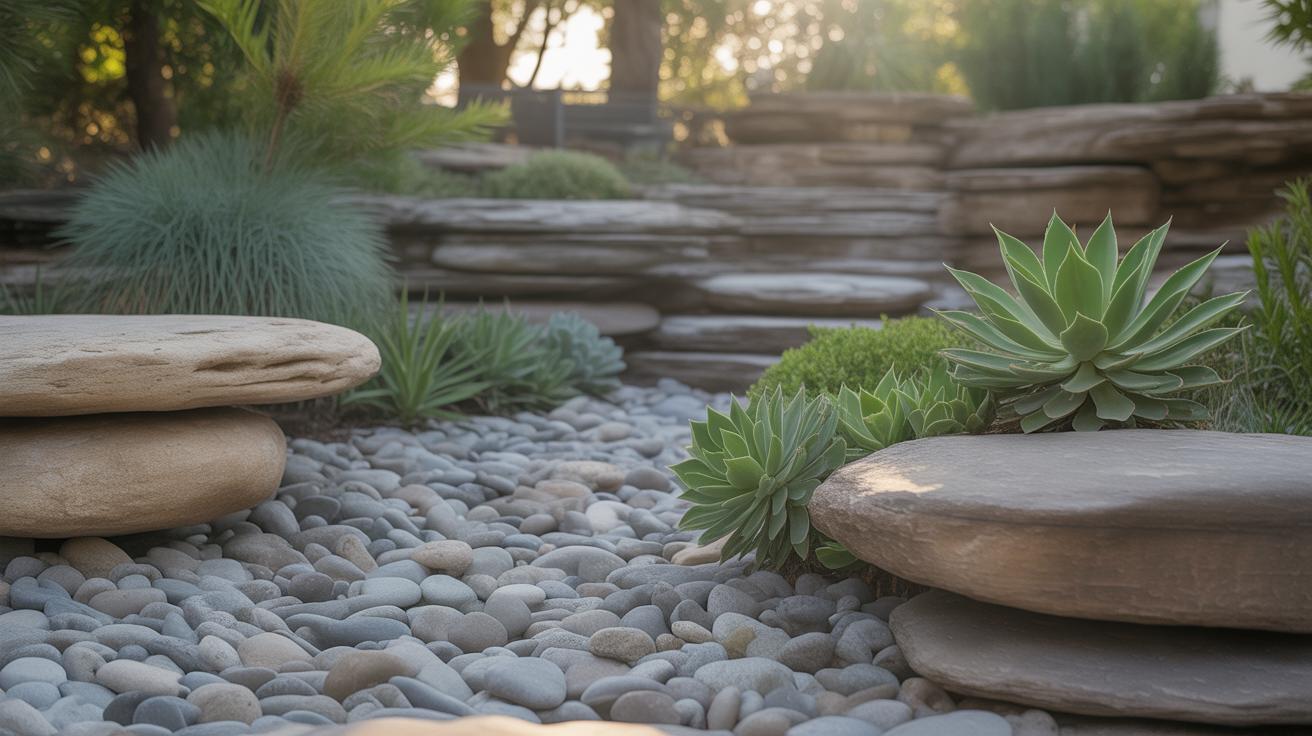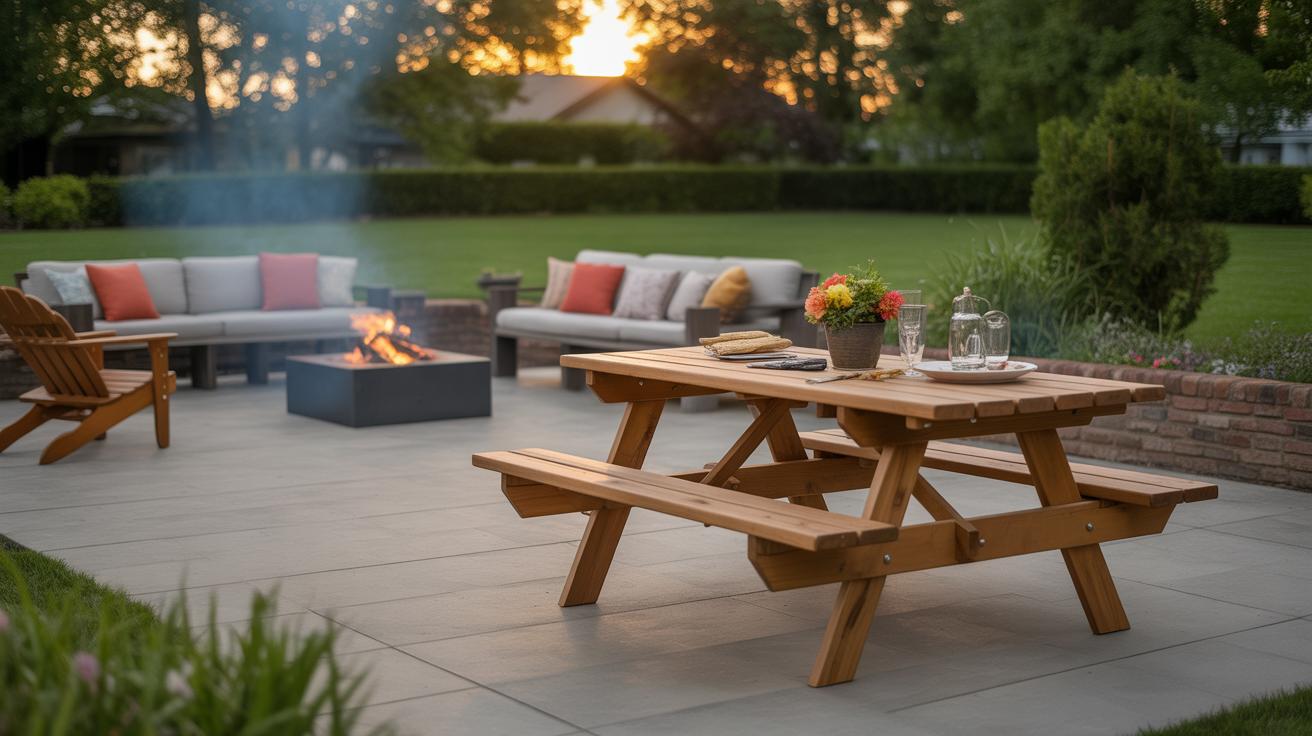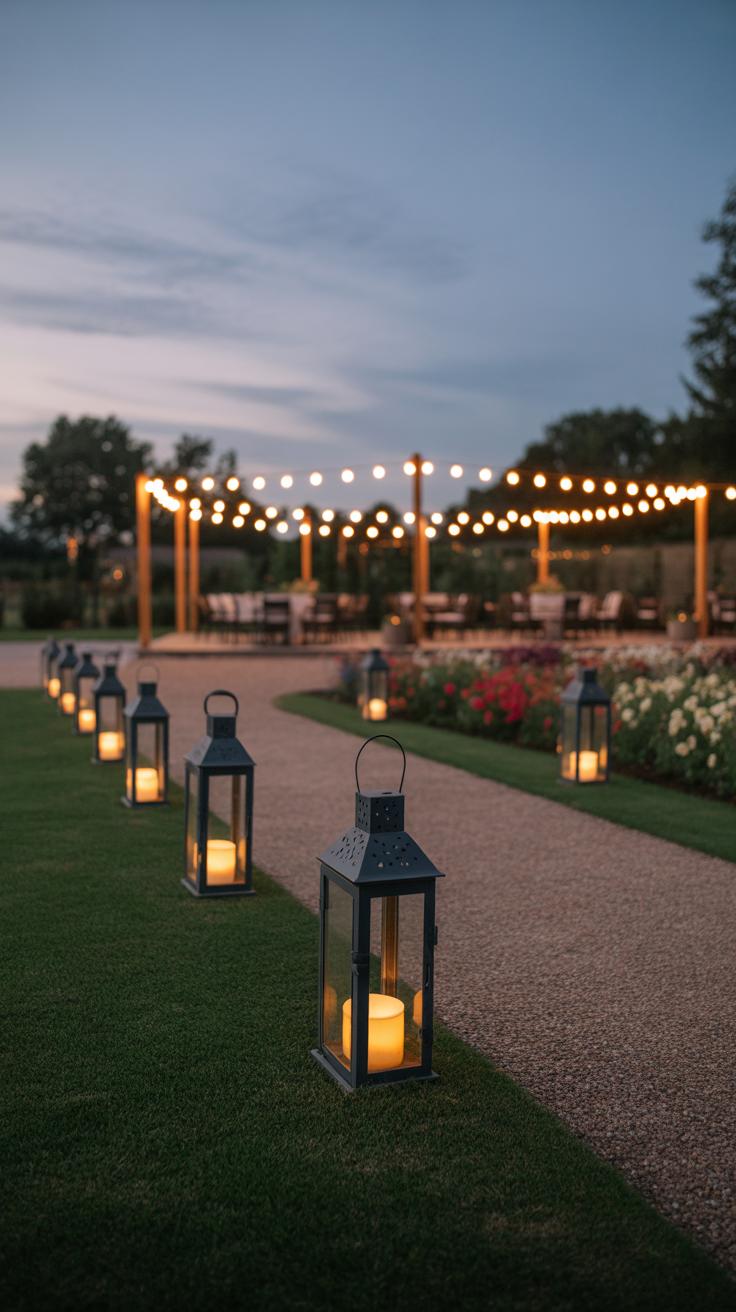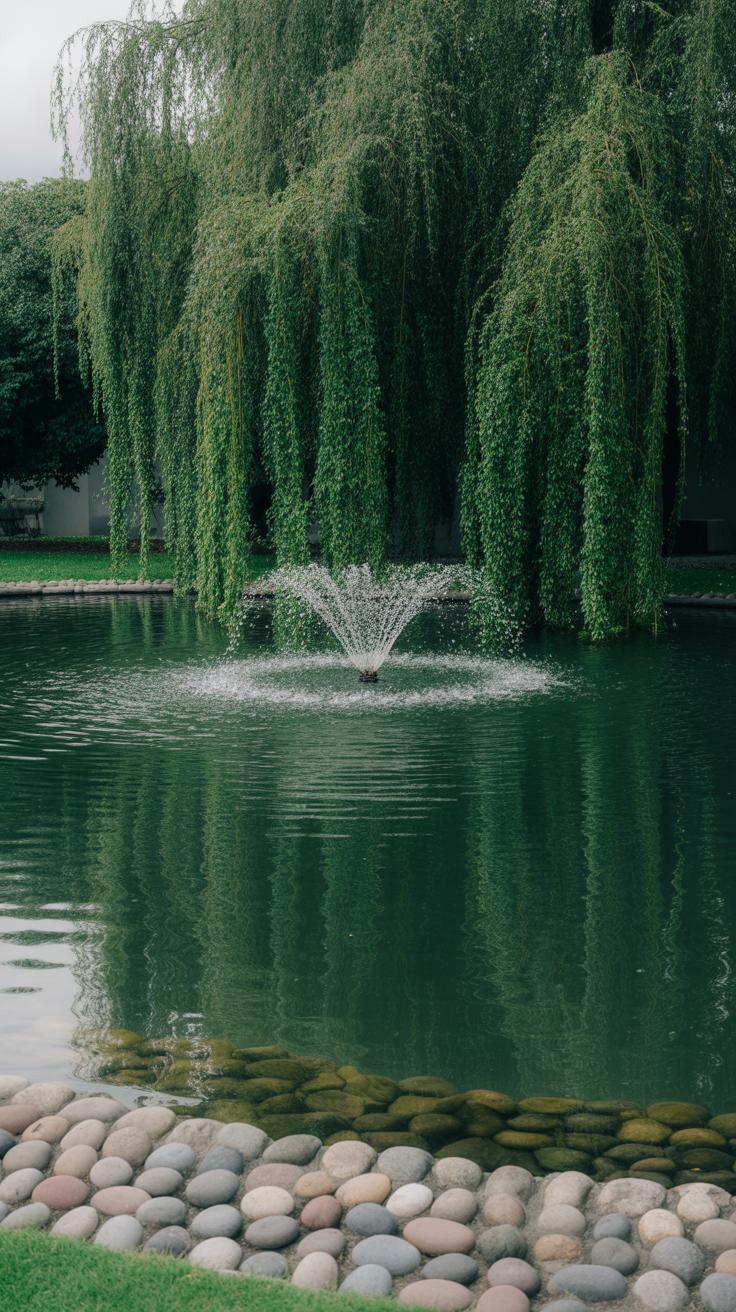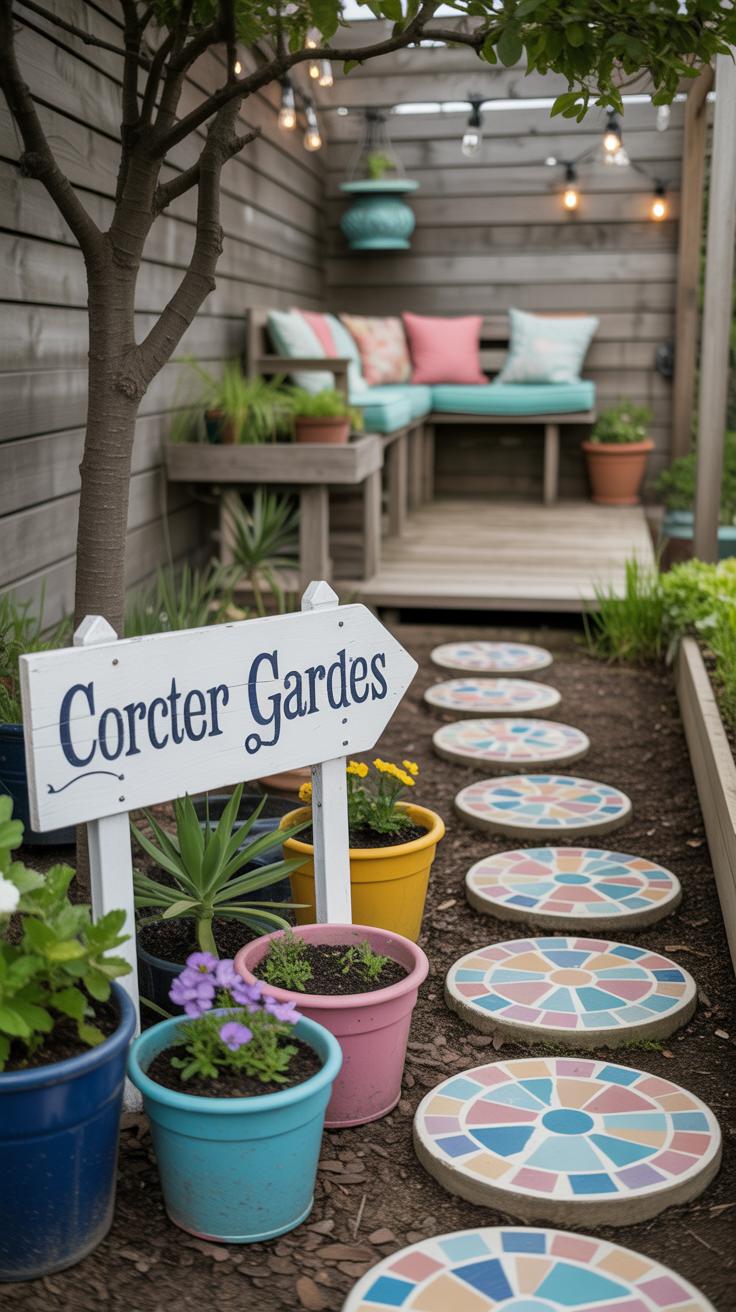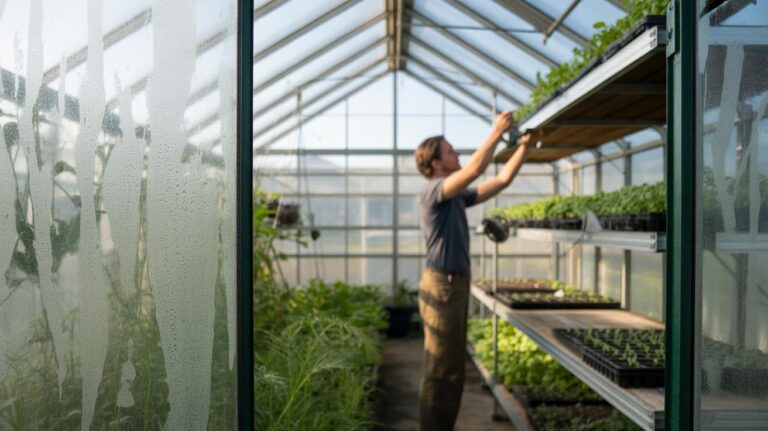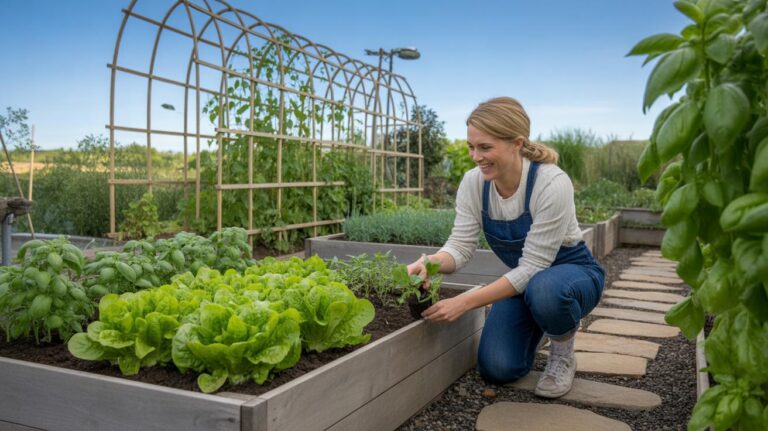Introduction
Landscape design is a blend of nature and culture, creating outdoor spaces that are both functional and beautiful. The principles of balanced landscape design help guide the placement of garden elements to achieve harmony and order. You don’t need to be an expert to create a pleasing and well-planned garden. By understanding basic design factors such as plant selection, layout, and focal points, you can transform your plot into a space you enjoy.
This article explores the key principles of balanced landscape design and shows you how to apply them to any plot size. From organizing plants to managing space, you will learn practical steps to make your garden look its best. Whether you have a small yard or a large area, these tips will help you create a landscape that feels just right.
What Is Balanced Landscape Design
Balanced landscape design means blending natural elements and built structures to form an outdoor space that feels stable and harmonious. It’s not just about making things look pretty; it’s about arranging plants, paths, and features so nothing feels out of place or chaotic. Whether your plot is tiny or expansive, balance helps you avoid overcrowding or emptiness, giving the garden a sense of order that quietly pleases the eye.
Think of balance as a way to manage how your garden “feels” when you step into it. It’s about making sure the physical weight—such as a heavy tree on one side—is balanced by something else, maybe a group of shrubs or a garden bench. In smaller gardens, this balance usually feels more intimate or direct. Larger spaces let you play with more variety but still need balance so the whole doesn’t become overwhelming or disjointed.
Key Concepts of Balance
There are a few core ideas behind balance, which you may have noticed without naming them. First, symmetry means matching elements on either side of a central line—for example, two identical flower beds flanking a walkway. It’s comfortable but sometimes feels a bit formal or predictable.
Then there’s asymmetry, where balance happens without exact matches. Imagine a tall tree on one side paired with a wide, bushy plant on the other side—different in shape but similar in visual weight. This approach feels more natural, often more interesting, but it takes a bit of practice to get right.
Visual weight matters too. Larger or darker objects feel heavier, while lighter or smaller ones seem less “heavy.” For example, a dark stone wall might balance a cluster of brightly colored flowers. You don’t need math to sense this balance; your eyes will often tell you what works if you pause and look.
Why Balance Matters
You might wonder why balance really matters beyond aesthetics. For one, balanced gardens tend to feel more relaxing. When your space feels like it “fits” together, you enjoy spending time there more. Balance also helps with function—if one side of the garden feels too busy or dense, that area might be hard to use or walk through.
In smaller plots, balance can prevent the garden from feeling cramped or cluttered, making the most of tight spaces. For larger gardens, it helps divide space into enjoyable, usable sections without losing a sense of unity. You might find that balanced design even simplifies maintenance, since elements are logically placed and work well together.
So, when thinking about your garden, ask yourself: Does this feel even, or is one side shouting louder than the other? It’s okay if the answer shifts as your plants grow or seasons change—that’s part of the living balance you’ll keep adjusting.
Assessing Your Plot for Design Success
Before you sketch a single line or pick out plants, spend some time simply looking at your garden plot. Understanding what you’re working with is a step too often skipped. Your choices depend heavily on conditions like climate, soil type, topography, and sunlight. Each of these factors plays a distinct role in shaping what your garden can truly be.
Take climate, for example. Is your area prone to heavy rains, or maybe dry spells? Knowing this helps you select plants that won’t struggle or wander off in search of water. Soil type matters just as much—clay holds water differently than sandy or loamy soils do. Plants that thrive in one might survive poorly in another. Topography—the slope and shape of your land—affects drainage and planting zones. And sunlight exposure influences where you can place sun-loving flowers versus shade-tolerant shrubs. Each detail can make or break your plan.
Checking Your Garden Conditions
Roll up your sleeves and start with a simple walk around your plot. Try this:
- Note sunny and shady spots at different times—morning, afternoon, and evening.
- Use a level or a ball to check slopes; even a slight incline changes how water moves.
- Dig small holes in various spots to look at soil texture and moisture.
- Mark any existing features like trees, fences, or structures that will impact your layout.
Write it all down or sketch a rough map. These observations are a foundation. Don’t rush it; sometimes, spending a few days watching your garden helps spot patterns.
Using What You Find
Once you have notes, ask yourself: which plants match my soil and light? Which spots get waterlogged after rain? You’ll want to pick species that fit naturally, rather than forcing the garden to conform to your wish list. For instance, if a shady corner has soggy soil, think about moisture-loving ferns instead of sun-hungry roses. The slope may call for terracing or retaining walls—not just for beauty but for stable soil and manageable water flow.
These insights guide where to place beds, paths, or seating. A balanced design arises when every element feels at home, responding to the plot’s quirks instead of fighting them. Your garden will have a quiet kind of harmony that’s hard to fake. At least, that’s how I’ve seen it work. It might mean adjusting your dream a little. But in the end, that makes the space more rewarding.
Planning Your Garden Layout
Organizing your garden’s space starts with breaking it down into manageable parts. Think of your plot as a canvas, but one that you divide into areas according to use and flow. You don’t have to fill every corner at once; some empty spaces actually help create balance. When you plan, focus on three key elements—paths, planting beds, and focal points.
Paths aren’t just walkways; they shape movement and perspective. Curved paths can feel more natural, while straight ones bring formality. Beds—whether raised or flush with the ground—should correspond to the zones you want. Don’t hesitate to leave gaps between beds and paths; spacing matters for a balanced feel.
Focal points like a sculpture or water feature act as anchors. They catch the eye and can swell a small garden or calm a large one. Place them where views naturally lead, but avoid crowding; sometimes a lone feature works better. I’ve seen gardens where focal points feel lost because everything is competing for attention. Less can often be more.
Creating Zones and Pathways
Dividing a garden into zones assigns each area a purpose. You might want a dining spot, a play area, a quiet nook, or a display garden. Zones help avoid a mismatched or cluttered look because every space has a clear role.
Connect these zones with pathways that feel inviting and, importantly, make sense. Paths that take you on a winding route encourage lingering, but shortcuts can keep it practical. Hard materials for paths, like gravel or pavers, contrast nicely with soft planting but resist overuse—too many paths can bleed space.
Beyond function, paths create a rhythm. I recall one garden where the winding path guided me from bright flowers into a shaded seating area smoothly, without feeling like I’d stumbled haphazardly into different spaces.
Positioning Garden Features
Where you place elements like seats, fountains, or sculptures can shape how the garden feels and works. Think about views from different spots—does your seating face the best scenery or the sun? Does a water feature catch light and sound just right?
Balance comes from how features relate to each other and the rest of the garden, not from perfect symmetry. A small sculpture opposite a dense shrub bed might balance a large pond on the other side, but both should avoid overwhelming adjacent zones.
Sometimes, features work best tucked away—a hidden bench beneath a tree, for example, offers a secret refuge. This kind of placement creates layers in your garden, making it more interesting over time. Imagine walking into your garden and discovering spots you hadn’t noticed before.
Choosing Plants for Balance
When picking plants for your garden, size and shape matter more than you might expect. Tall spires sitting next to low mounds can give your space a feeling of structure without feeling cramped. But if everything is the same height and form, the garden risks looking flat or, strangely, unbalanced. It’s a bit like seating at a dinner party — too many people squashed close or a few spread too far apart both feel awkward.
Mixing plant forms can help. Round shrubs paired with spiky or columnar plants provide contrast and keep your eyes moving. Try combining small groundcovers, mid-height flowering plants, and a few statement trees or taller shrubs. This layering fills space thoughtfully without creating overcrowding or awkward gaps.
Color plays a role too. Consider grouping plants that offer complementary shades or varied tones of the same color to avoid monotony. Including evergreens or plants with year-round foliage can anchor your garden and balance out more seasonal bursts of color. It’s interesting how some muted greens make those sudden splashes of red or yellow appear even brighter, isn’t it?
Seasonal changes in your planting scheme bring life throughout the year. You might add bulbs for spring, flowering shrubs for summer, and plants with interesting bark or seedpods for winter. This extends the garden’s visual interest—and keeps it from feeling empty when some plants fade back. Balancing color and form through the seasons requires a bit of patience and observation, though. What you imagine in spring might miss the mark come late autumn.
Finding this balance is more art than science. You’ll probably adjust your planting a few times. But by paying attention to plant size, shape, and color, you can create a garden that doesn’t just look good when viewed through a photograph but feels right while you’re actually standing in it.
Incorporating Hardscape Elements
Hardscape elements like patios, walls, and garden furniture play a significant role in shaping your outdoor space’s balance. They provide structure and form, grounding the softer plant materials. Think about a stone patio—it offers a stable, flat surface for gatherings and contrasts with the organic shapes of plants. Walls can create enclosures or define spaces, giving your garden distinct “rooms” without overcrowding. Furniture, meanwhile, invites use and adds personality, but choosing pieces that fit the garden scale is key. Oversized chairs in a small garden? That might throw things off.
Balancing Soft and Hard Elements
You want your garden to feel like one unified area, not two competing halves. So blending hardscape with plants matters. For example, a wooden bench placed beside tall grasses or a flowering shrub softens the overall look. Rough stone steps framed by leafy plants can feel inviting, less harsh. It’s about balance—not every corner needs a piece of furniture or a wall, but the right placement helps your eye move smoothly across the space. Sometimes, a hard edge next to a soft curve adds subtle energy without feeling jarring.
Practical Tips for Hardscape Placement
Paths should guide visitors naturally. Avoid making walkways too narrow or winding just for effect; they need to feel purposeful. Place seating where people can enjoy views or a bit of shade—think beneath a tree or near a flower border. Walls aren’t just barriers; use low retaining walls to create tiers, doubling your planting space. Try stepping back and imagining how your hardscape fits with the plants around it. If you feel lost between stones and shrubs, maybe you placed too many features close together. Space matters. Let your garden breathe.
Designing for Different Plot Sizes
When working with small plots, space-saving becomes crucial. Using balanced design principles here means focusing on vertical elements like trellises or slender trees to draw the eye upward, which can open up the feeling of space. Mirrors or reflective surfaces trick the mind too, but don’t overdo it—too many can feel confusing. Try grouping plants in odd numbers and varying leaf shapes to keep the space lively without crowding.
Medium plots offer some breathing room. You can afford a couple of focal points, perhaps a bench and a small water feature, but still keep pathways narrow to preserve flow. Balance here often comes from repeating certain colors or textures in different areas, so the design feels intentional, not scattered.
Large plots present different challenges. They require dividing the space into zones—like relaxation, dining, play, or gardening—to avoid overwhelming the senses. Yet, all zones should share a unifying element such as a color theme or consistent materials to maintain cohesion. Scaling of trees and shrubs matters too; too many tiny plants in a large area look lost, but huge ones everywhere can suffocate the openness.
Making Small Spaces Feel Larger
It’s tricky to balance a tiny garden—you want it to feel open but not empty. I’ve found that using slender, vertical plants paired with low-growing ground covers helps. Avoid heavy clusters; instead, space things out but keep the eye engaged with varied textures and subtle colors.
Paths or stepping stones arranged asymmetrically encourage movement without crowding. Using light-colored hardscape reflects light, enhancing brightness. Even a single bold element, like a small sculpture, can anchor the space. But, don’t try to fill every corner—white or bare spots can actually breathe life into the garden.
Managing Large Gardens
Big gardens tempt you to plant everything, everywhere. Resist that urge. Breaking the area into clear zones supports balance. Think of each zone in itself as a small garden with its own rhythm, yet connected through similar materials or colors. For example, a flower bed with repeating colors near a seating area ties those spaces together.
Careful placement of paths and sightlines guides visitors and connects zones naturally. You might want wide, open lawns punctuated by clusters of trees. But balance those with quieter, sheltered corners. It’s about not making the space feel either cluttered or too sparse, which is easier said than done. Sometimes, zones can feel a bit disconnected, but then a unifying garden element reminds you it’s one place.
Maintaining Balance Over Time
Keeping your garden balanced isn’t a one-time task. As plants grow, seasons shift, and the weather does its thing, your layout changes, sometimes in ways you didn’t expect. So, staying attentive matters more than you might think.
Pruning and Plant Care
Pruning helps keep plants from getting unruly or overshadowing others. Cutting back branches or dead leaves encourages healthier, more controlled growth. You don’t always have to be precise—sometimes a slight unevenness adds natural charm. But try to prune with the plant’s natural shape in mind. Techniques vary by species, so researching or asking local gardeners can help you avoid mistakes.
Regular watering and feeding support steady growth too, but watch out for overdoing it. Over-fertilizing can lead to overly rapid growth that messes with your balance, making some areas look crowded or wild. I’ve found a light hand usually works best.
Adapting to Garden Changes
Gardens don’t always stick to your plan. Some plants outgrow their space — suddenly a small shrub becomes a wall. When that happens, consider thinning, relocating, or even swapping plants. Shifting a bush can seem drastic, but it often saves the overall feel.
Unexpected weather changes also challenge your design. A few years back, a dry summer forced me to replace moisture-loving plants with hardier ones that fit the original layout but cope better with drought. Adjustments don’t have to mean starting over; subtle tweaks often keep the balance you worked for intact.
Ask yourself: does this change improve or disrupt the harmony? Sometimes wait and see. Gardens aren’t static; they evolve, and so should your approach.
Enhancing Your Garden with Lighting
Garden lighting can change the way your outdoor space feels after dark. It’s not just about visibility; it’s about creating balance and emphasizing your favorite features. I’ve noticed that with a little thought, a few well-placed lights can turn a plain yard into something more engaging, even inviting.
Simple ideas like spotlights on a striking tree or soft path lights can guide the eye and bring coherence to what might otherwise seem disjointed at night. Don’t feel pressured to illuminate everything equally—that can feel artificial. Instead, focus where you want people to look or walk.
Choosing the Right Lights
There are several types of garden lighting, each giving a different mood and effect. Warm LEDs can create a cozy, relaxed vibe, while cooler tones might feel modern or stark. Spotlights work well to highlight statues or architectural features, while string lights or lanterns add a gentle, playful touch.
Think about what you want from your garden’s atmosphere after dark. Do you want calm and subtle or bright and lively? That will guide whether you choose floodlights, uplights, or smaller accent lights. You might even want to mix them, though it can get tricky not to overdo it.
Placement for Best Effect
Where you place lights is crucial to avoid harsh shadows or glare. Lighting a path from low down makes walking safer and naturally draws the eye along your garden’s flow. Uplighting a tree or shrub adds vertical depth, giving your garden a layered look that doesn’t vanish after sunset.
Try not to place lights directly opposite each other for a balanced feel—sometimes asymmetry works better to create interest. Think also about safety near steps or uneven ground, blending practical lighting with aesthetic goals. Walking around your garden at night with a flashlight helps spot where light is needed most or where it might feel intrusive.
Using Water Features for Visual Balance
Water elements can bring a unique sense of calm and balance to a garden. Whether it’s a small birdbath or a modest fountain, the gentle movement or reflective surface provides a focal point that feels both natural and restful. But picking the right feature isn’t always simple—you want something that suits your space without overwhelming it.
Think about the size of your garden first. A large pond might feel out of place in a tiny courtyard, while a small basin could get lost in a big backyard. Placement matters too: near seating areas, water features invite a moment of pause. You might want to position them where the sunlight catches the water or where you can enjoy the sound as you walk by.
Types of Water Features
There are several options, each with its particular qualities:
- Ponds: Offer a broad, reflective surface and habitat for wildlife. They require some maintenance and enough space to look intentional rather than accidental.
- Fountains: Provide motion and sound that mask urban noise. Some need pumps, which means more upkeep and an electrical source nearby.
- Birdbaths: Small and simple, these attract birds and act as charming spots; easy to install but need regular cleaning.
- Water walls or cascades: Can create a dramatic vertical element, yet might dominate if not balanced with plantings or structures.
Each feature carries a balance of benefit and challenge. You might love the idea of a bubbling fountain but hesitate about the extra care it demands. Or the serenity of a pond could seem ideal until you think of maintaining water clarity.
Integrating Water in Design
Blending water features with plants and hardscape is key to making the design feel cohesive. Surround a pond with a mix of ground covers and taller plants to soften edges—avoid harsh lines that make water stand out awkwardly.
Consider materials nearby: natural stone looks different next to modern concrete, and each sends a different message about the space. Water works well near seating or pathways, but be mindful of glare or slippery surfaces.
Sometimes, subtlety pays off. A small birdbath tucked into a lush planting can surprise and delight without shouting for attention. On the other hand, a fountain at the garden’s center might demand visual “weight” from nearby shrubs or architectural features.
Have you tried placing a water feature where you least expected? Its effect can change depending on time of day or season, which keeps the garden feeling alive and perhaps a little unpredictable. It’s about feeling the balance, not forcing it.
Personalizing Your Balanced Garden
Your garden shouldn’t just be about shapes and proportions—it’s also where your personality lives. Adding personal touches can make a balanced design feel truly yours. Think about your favorite plants; maybe you love those unruly lavender bushes or small clusters of tulips that pop with early color. Including these amidst structured beds keeps life interesting without throwing off balance.
When choosing your style, consider what makes you feel comfortable outside. Are you drawn to a formal, neat look or something more relaxed and natural? Both can follow balanced design principles if you play with scale, repetition, and space thoughtfully. Don’t stress too much about fitting into a specific “style” label—sometimes mixing a bit of cottage charm with minimalist lines can work if placed carefully.
Decor and furniture choices are another way to show who you are. For example, a weathered bench or a quirky garden sculpture might seem out of place at first, but used sparingly, they add character. Pair colorful pots or cushions with your dominant garden colors to pull the space together. Remember, small decorative elements can complement rather than compete.
Ask yourself: What do I want this space to say about me? There’s no single right answer here, just your sense of what feels welcoming and balanced. Your garden, after all, is not just a design exercise—it’s your outside living room, your quiet corner, your hobby spot. So let a bit of you shine through, even if it means a tiny imperfection here or there.
Conclusions
Balanced landscape design means bringing together plants, structures, and space in a way that feels natural and pleasing. You have learned how to use design principles to create order and focus in your garden. By considering your site’s unique features and your needs, you can make smart choices that improve your outdoor space.
Remember to plan with your garden’s climate, soil, and layout in mind. Use focal points, symmetry, and plant types to guide the eye and make the area inviting. With these ideas, you can shape your garden to be both beautiful and practical, enhancing your enjoyment of the outdoors every day.

